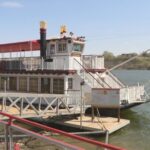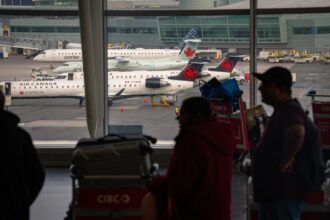Une importante controverse secoue le secteur minier canadien après qu’un courriel de Marcus Holloway, PDG de Northern Horizon Mining, adressé à la cheffe autochtone Sarah Redfeather, ait été divulgué aux médias hier après-midi.
Le courriel, envoyé suite à l’échec des négociations concernant un projet minier sur des territoires traditionnels dans le nord de la Colombie-Britannique, contenait des propos que de nombreux défenseurs des droits autochtones qualifient de condescendants et irrespectueux. “Nous nous sommes pliés en quatre pour répondre à vos préoccupations, mais à un moment donné, nous devons aller de l’avant avec ou sans votre bénédiction,” aurait écrit Holloway dans cette communication datée du 28 avril.
Redfeather, Cheffe de la Première Nation Lakeview, a réagi à la controverse lors d’une conférence de presse ce matin. “Cela révèle la véritable nature de ce à quoi nous avons été confrontés à huis clos,” a-t-elle déclaré. “Le visage public du respect et la réalité privée ne pourraient être plus différents.”
Cette controverse émerge dans un contexte de surveillance accrue du développement des ressources sur les terres autochtones à travers le Canada. Les récentes évolutions des politiques fédérales ont mis l’accent sur la nécessité de consultations significatives et d’approches basées sur le consentement pour les projets affectant les territoires autochtones.
Les analystes de l’industrie suggèrent que les retombées pourraient avoir des implications importantes pour Northern Horizon. “Dans l’environnement actuel, ce type de communication peut faire dérailler non seulement les relations communautaires mais aussi la confiance des investisseurs,” a noté Dre Elena Montoya, professeure d’études autochtones à l’Université de Toronto. “Les entreprises ne peuvent plus fonctionner avec une approche dédaigneuse des droits autochtones et s’attendre à éviter les conséquences.”
L’action de Northern Horizon Mining a chuté de 4,3% suite à la divulgation du courriel, plusieurs investisseurs institutionnels exprimant leur inquiétude quant aux pratiques d’engagement autochtone de l’entreprise et à ses engagements ESG globaux.
L’Association minière du Canada a publié une déclaration se distançant des commentaires de Holloway, soulignant que “le dialogue respectueux et l’engagement significatif avec les communautés autochtones représentent les meilleures pratiques de l’industrie et une obligation éthique.”
Pendant ce temps, le conseil d’administration de Northern Horizon a annoncé une réunion d’urgence pour demain afin d’aborder la situation, avec des spéculations croissantes concernant de possibles changements de leadership au sein de l’entreprise. Des sources proches du conseil indiquent que plusieurs administrateurs ont été “pris au dépourvu” par le ton et le contenu de la communication.
“Il ne s’agit pas seulement d’un courriel,” a déclaré l’avocat spécialisé en droits autochtones Michael Cardinal dans une entrevue. “Il s’agit de schémas de comportement qui continuent de saper les efforts de réconciliation dans tout le secteur des ressources.”
L’incident a ravivé des discussions plus larges sur la responsabilité des entreprises dans le développement des ressources canadiennes. L’année dernière, le gouvernement fédéral a introduit des exigences renforcées pour la consultation des Autochtones dans les processus d’évaluation environnementale, bien que les critiques soutiennent que les mécanismes d’application restent insuffis










